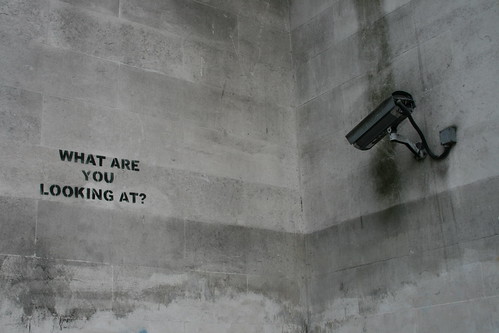Every step you take, every move you make, big data is watching you. An unexpected consequence of the post-pandemic rise in home working seems to be intelligent software known as bossware installed on an employee's computer. This tracks your digital activities during the working day: every click, every link, document, e-mail, message. The software analyses this and awards productivity scores and other stats that bosses can used to assess your performance. This is described in detail in an article from The Guardian, ‘Bossware is coming for almost every worker’: the software you might not realize is watching you.
Each employee gets a daily “productivity score” out of 100 which is sent to a team’s manager and the worker, who will also see their ranking among their peers. The score is calculated by a proprietary algorithm that weighs and aggregates the volume of a worker’s input across all the company’s business applications – email, phones, messaging apps, databases.
In some organisations this is connected to a webcam and microphone so that everything you do is tracked and unproductive behaviour will be reported. In many cases the employees are unaware they even have this software on their devices. This is not a dystopian vision of the future but something that is happening right now in many organisations and is expected to grow.
There are so many issues with this that it is hard to know where to start. We often place great trust in allegedly intelligent software and assume that it offers hard facts based on solid data with no human judgements involved. Productivity software analyses your level of digital activity but not the quality of what you do. If you send lots of pointless e-mails every hour, write a few simple documents and click on approved web sites regularly you can appear to be a model employee. If you spend time thinking and researching background information before you write you may get black marks. Activity and noise do not equal efficiency and hard work.
The same applies in education where we are increasingly using learning analytics to track and analyse how students study, looking especially at their activity levels in discussion threads and how they progress through recorded lectures, quizzes and calculations. Once again the most active students are not necessarily the ones who learn best. But this simple analysis of working and learning can be very dangerous since it misses the need for silent reflection and rewards spontaneous and visible (or audible) activity.
An article by John Warner in Inside Higher Ed, Utter madness, reflects on the use of bossware on writers and academics who often have long periods of digital inactivity as they try to write an article or prepare a lesson. Warner also brings up the threat of this simplistic approach in assessing students.
Lest we think this is some kind of corporate dystopian nightmare, let me direct your attention to the learning management systems now ubiquitous on college campuses and the way they are often used to track student activity. If young workers are accepting of this kind of surveillance by their employers, it’s only because it’s been normalized much earlier in their lives. And I would also ask how many of you are required to input all of the minutiae of your scholarly lives into some kind of “faculty activity system” and consider how much time this requires, as well as the toll it takes on one’s spirit as the information disappears into the digital ether, never to be heard from again.
The use of remote proctoring software to monitor students doing exams online has raised many alarms around the world. Even if the aim of preventing cheating may be reasonable the cost in terms of intrusion and breach of integrity is too high and many students and teachers have raised strong objections to its use. Video and audio data of your home, your behaviour and appearance is stored by corporations as is every click and keystroke you make during the exam.
This is a long way from the visions we had of online education and a digital society. We hoped for a connected world allowing global collaboration and free access to information and learning. But sadly the trend today is that digitalisation is leading to more control and suveillance and that there is no opt-out clause. That's why I find it very hard to be enthusiastic about big data, artificial intelligence, learning analytics and suchlike. I see some positive uses but the risk of misuse outweighs them by a long way. Once you start analysing work and life in such a way you destroy any traces of humanity and community. If that type of efficiency is what organisations want then they should probably just employ robots.

